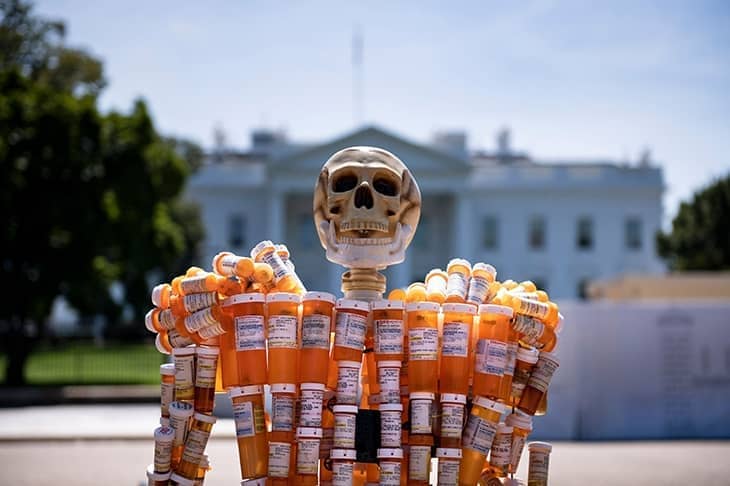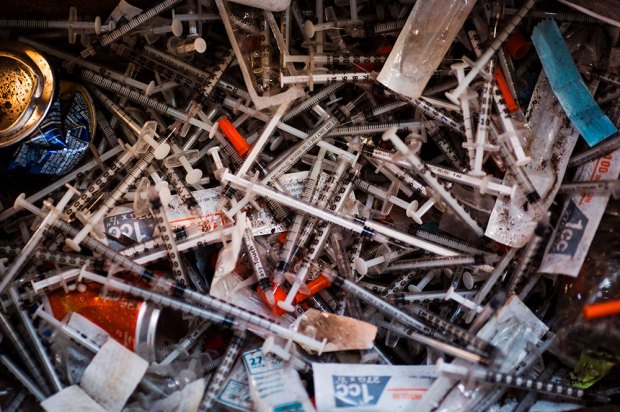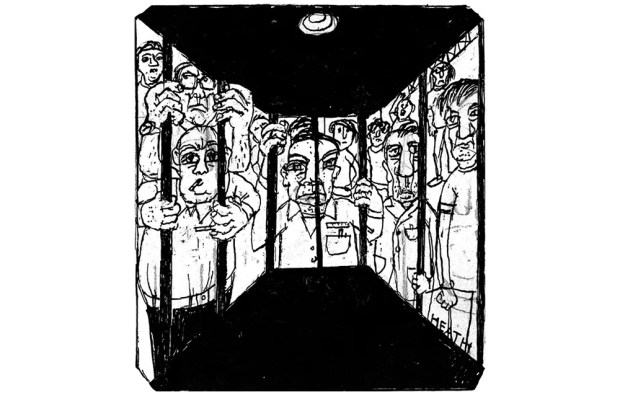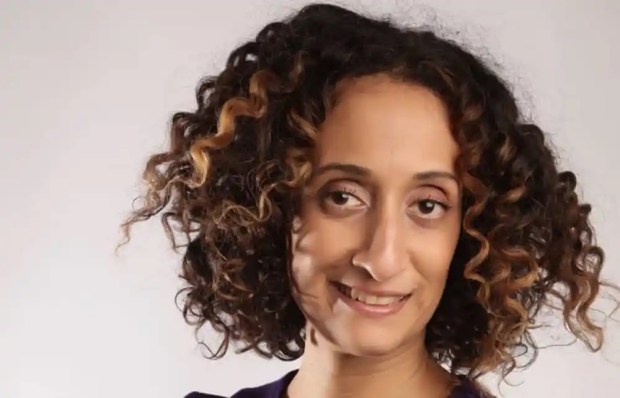Almost everyone here that I’ve spoken to about it assumes that the opioid crisis in the United States won’t ever come to the UK. Yes, the problem there is accelerating. Drug overdose deaths in America are now at more than 100,000 a year. A few days ago the Lancet predicted 1.2 million dead by 2029 but… it couldn’t happen here. We hold up those three sacred letters — NHS — like a talisman to ward off the evil. We tut about Big Pharma and its undue influence in Washington, we remove the Sackler name from galleries and museums, and then we get back to watching America overdose on TV.
The opioid crisis in the US is almost its own entertainment genre these days, with any number of documentaries and dramas available to stream. If it’s the origin story you’re after then there’s Dopesick(Disney+), which covers the Sackler family, their company, Purdue Pharma, and its demonically successful attempt to push OxyContin, their addictive cash-cow painkiller, into blue-collar America. Sit back and watch regular Yanks turn into twitching zombies.
For a more current state of affairs, the best of the bunch is a 30-minute doc called Heroin(e) (Netflix), which follows the daily life of Jan Rader, former fire chief in Huntington, West Virginia. It shows her and her team racing through the streets in the desperate attempt to reach overdose victims before they die. After the OxyContin scandal came to light and prescriptions dried up, vast hordes of addicted Americans turned to heroin and then to a cheaper, synthetic opioid, fentanyl, often used in general anaesthetic. Fentanyl is an awful lot more potent than heroin — just 3ml will kill an average man — and so overdosing is an inevitable part of using.
What unfolds before Jan Rader’s team is like some sort of terrible computer game. There are bodies everywhere. Bodies in corridors, bodies in the streets, bodies slumped against doors. Jan, blonde and bird-like, has to get to these people and administer Naloxone before they die. Naloxone acts instantly, pushing the opioid from the brain’s receptors, and so if she’s made it in time, the bodies jolt into life, choking and groaning. It’s like Buffy the Vampire Slayerin reverse.
In common with most people in this country, the Lancet report seems to blame unrestrained capitalism for the crisis: ‘The risk of global spread is greater… where corporations look for new markets, but are left to self-regulate. To manage pain, greed must be managed as well.’ But what it doesn’t mention is that it’s not just the fat-cat Sacklers feeding off America’s blue-collar souls, but communist China as well.
Almost all of the illegal fentanyl in the USA is now made in China by chemists in labs in Wuhan, and sold via the dark web to American users. How’s that for a strange fact: both of the epidemics currently corroding the USA, Covid and opioid addiction, were cooked up in Wuhan. Both induce respiratory failure. Strange is the wrong word, but I’m not sure there is a word in English that conveys the right mix of shock and black inevitability.
So this just isn’t a Big Pharma problem any more. The opioid crisis in the 2020s doesn’t care how universal your healthcare is. It’s about the infiltration of deadly lab-made opioids into the existing drug scene; it’s about the ease of supply and the enormous potential for profit — and that’s what makes me jumpy. When you consider the money to be made, how is it possible that the crisis won’t spread over here?
In 2019, the reporter Ben Westhoff wrote an excellent book-length investigation into illegal fentanyl — Fentanyl, Inc. One dealer he spoke to buys a kilo of carfentanil (a fentanyl analogue) from China for about $3,000, or $3 per gram, but sells it in America for $800 per gram. That’s an irresistible mark-up. And one of the weird but depressing facts Westhoff uncovered is that even widespread understanding of the dangers of fentanyl doesn’t act as a deterrent. In fact, an OD can act as an advert. ‘When an addict hears that someone ODed, the first question they ask is: where’d they get it?’ says a user called Richie. ‘They want to find some of it for themselves.’
We have 300,000 of our own homegrown heroin users here — do we somehow think they’re made of different, sterner stuff than American addicts?
Then there’s the cocaine. Britain is the coke capital of Europe, you’ll be proud to know. Last year, a Home Office drug review led by Professor Carol Black found that middle-class snorters were driving a rise in heavy cocaine use. I’d say they’d better beware. Cocaine is one of the easiest drugs to cut with fentanyl — they’re both white powders so it’s simple to mix and impossible to spot.
In 2015, just 17 of NYC’s overdose deaths involved cocaine and fentanyl. In 2019, that number was 183. Lord knows what the next lot of data will show. On Long Island last summer, six people were killed by one batch of fentanyl-laced cocaine. They probably didn’t even know what they were snorting. Cokeheads don’t usually have the constitution of heroin users; their tolerance for opioids is low. They’ll be falling like ninepins in London if our dealers start importing wholesale from China.
And who’s to say they don’t already? Britain isn’t overdosing at the rate America is, but the problem is growing. In December Fraser Nelson wrote in The Spectator about our ‘deaths of despair’ and pointed out that drug-poisoning deaths have reached the highest number since records began. In the north-east, the worst-hit region, they rose by 17 per cent in 2020.
And so the last in my series of depressing questions is this: are we quite sure we even know what’s in the drugs over here?
Even after years of worrying about opioids, America still doesn’t have enough sophisticated crime labs to test for fentanyl during an autopsy, let alone all the endless array of deadly new pharmaceutical products on the scene. Two years ago our own Advisory Council on the Misuse of Drugs recommended urgently investing in better equipment for autopsies. So how many of those British deaths from drug–poisoning were even tested for fentanyl and its analogues?
Perhaps we are immune to the sort of opioid disaster that’s taken over America, but it might be wise to check.
Got something to add? Join the discussion and comment below.
Get 10 issues for just $10
Subscribe to The Spectator Australia today for the next 10 magazine issues, plus full online access, for just $10.
You might disagree with half of it, but you’ll enjoy reading all of it. Try your first month for free, then just $2 a week for the remainder of your first year.















Comments
Don't miss out
Join the conversation with other Spectator Australia readers. Subscribe to leave a comment.
SUBSCRIBEAlready a subscriber? Log in